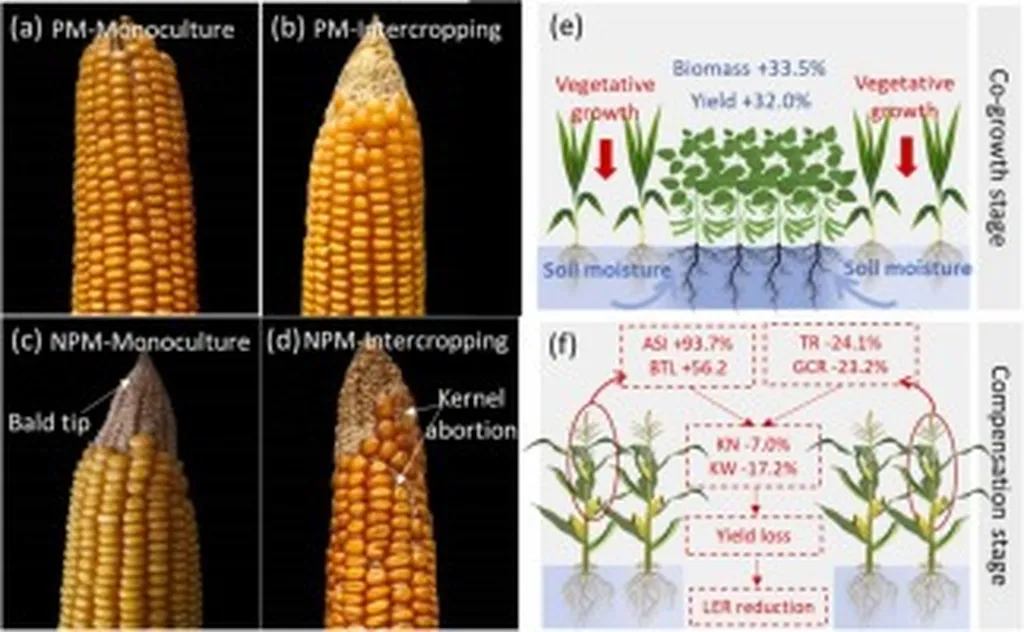In the quest to maximize agricultural productivity and economic returns, researchers have been exploring innovative cropping strategies. A recent study published in the *Journal of Academia* sheds light on the potential of intercropping sweet corn and groundnut, offering insights that could reshape farming practices, particularly in regions with limited land resources.
The study, led by Borhan Abdul Haya from the Department of Crop Science at Universiti Putra Malaysia, evaluated the biological, competitive, and economic performance of sweet corn and groundnut intercropping systems. The research compared three cropping regimes: sweet corn monoculture, groundnut monoculture, and various intercropping treatments with different sowing times.
One of the key findings was that sweet corn monoculture outperformed intercropping in terms of profitability. This was largely due to market pricing, which favors corn based on the number of ears rather than weight. “The market dynamics played a significant role in our findings,” noted Haya. “Sweet corn’s pricing structure gave it an economic edge, even when intercropping showed potential for better land-use efficiency.”
The study used several metrics to assess the performance of the intercropping systems. The Land Equivalent Ratio (LER) indicated that the T4 system, where groundnut was sown two weeks before sweet corn, achieved the highest land-use efficiency. However, the Area Time Equivalent Ratio (ATER) remained below 1, suggesting no temporal advantage over monocropping systems.
The Aggressivity Index (AI) and other competitive metrics confirmed the dominance of sweet corn in intercropping arrangements. “Sweet corn’s competitive nature was evident,” Haya explained. “It tended to outperform groundnut in mixed plots, which has implications for crop management and planning.”
Despite the economic advantages of sweet corn monoculture, the study highlighted the potential economic benefits of intercropping. The Monetary Advantage Index (MAI) was highest in the T4 system, indicating that intercropping could offer economic advantages under certain conditions.
The research suggests that while intercropping can improve land-use efficiency, the economic viability of such systems depends on market dynamics and crop management practices. For smallholder farmers, the choice between monocropping and intercropping will likely hinge on balancing productivity and profitability.
This study not only provides valuable insights into the agronomic and economic aspects of intercropping but also opens avenues for further research. Future studies could explore different intercropping ratios, additional crop combinations, and the impact of varying environmental conditions on crop performance.
As the agricultural sector continues to evolve, the findings from this research could shape the development of more sustainable and productive farming practices. By understanding the intricate balance between crop competition and economic returns, farmers and agronomists can make informed decisions that optimize both land use and profitability.
The study, led by Borhan Abdul Haya from the Department of Crop Science at Universiti Putra Malaysia, was published in the *Journal of Academia*, offering a comprehensive analysis that could influence future agricultural strategies.

